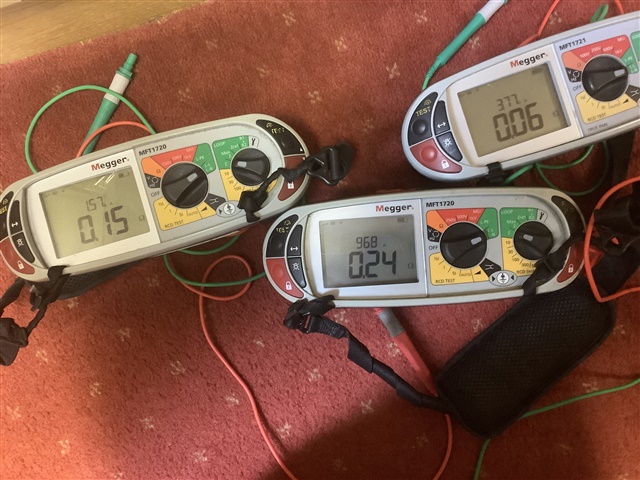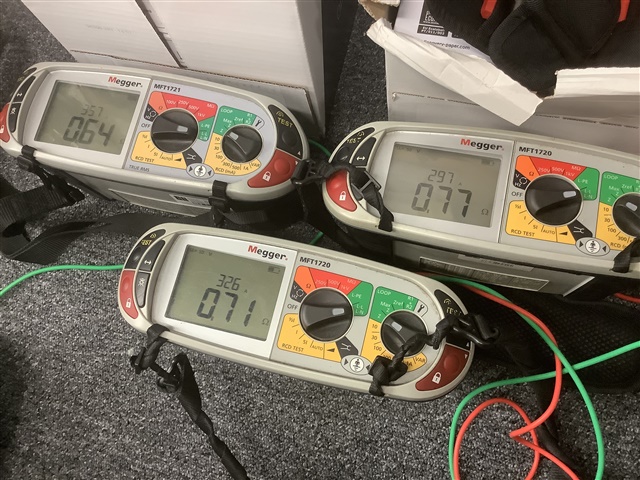Not sure what to record! 
All calibrated around the same time. Three readings taken on each instrument with swapped leads and probes all fairly consistent with photo.
Then move to a socket opened up using same leads;

Good spot. I was not familiar with the history of these type of testers, but apparently when they were launched in 2011, there were a few cases of confusing readings and then a firmware tweak, whatever that entails
It may be interesting to compare firmware versions if that is possible,
Also the official accuracy is (from here) L-N/L-L tests ±5% ±5 digits
Now it seems the spread observed is larger than that, but before rushing off, I'd be looking at the quality of the connections to the test leads - a very thin film of oxide on the banana plugs is all that is needed to add a handful of unwanted milli-ohms, When new these shrouded 4mm connections can manage 0.5- 1milliohm per mated pair, but it rises with time as the condition of the mating surfaces deteriorates.
Mike.
Now it seems the spread observed is larger than that, but before rushing off, I'd be looking at the quality of the connections to the test leads - a very thin film of oxide on the banana plugs is all that is needed to add a handful of unwanted milli-ohms, When new these shrouded 4mm connections can manage 0.5- 1milliohm per mated pair, but it rises with time as the condition of the mating surfaces deteriorates.
During my training, we were encouraged by one of the tutors to oscillate the plugs three or four times in order to abrade any corrosion. I have no idea whether it works or not.
Notwithstanding annual calibrations, let's not forget the use of a check box or even monthly testing on a particular socket (in the workshop, kitchen, or office). If the plug connexion is deteriorating, it should be evident.
We're about to take you to the IET registration website. Don't worry though, you'll be sent straight back to the community after completing the registration.
Continue to the IET registration site